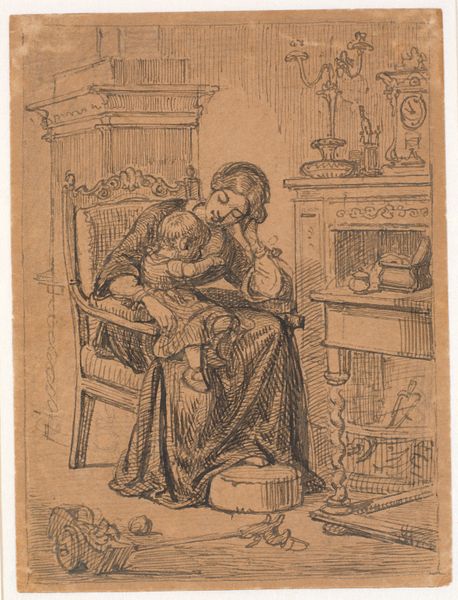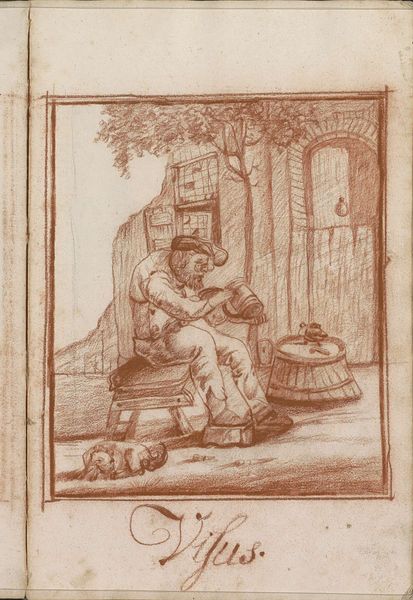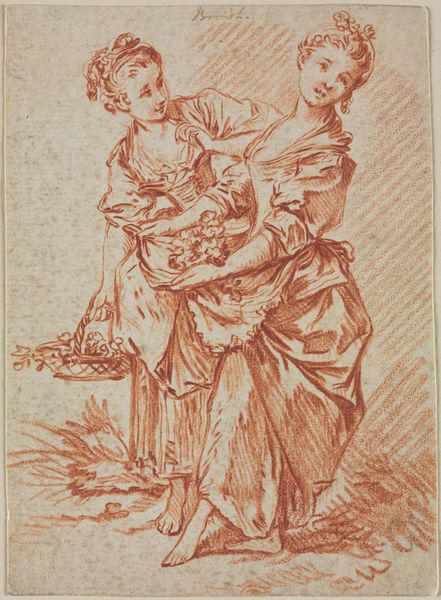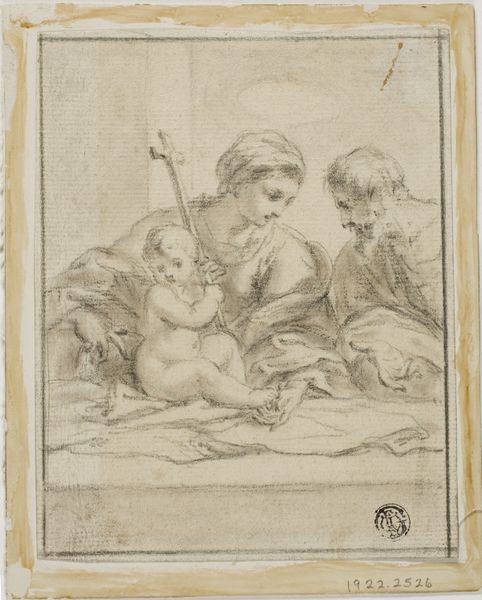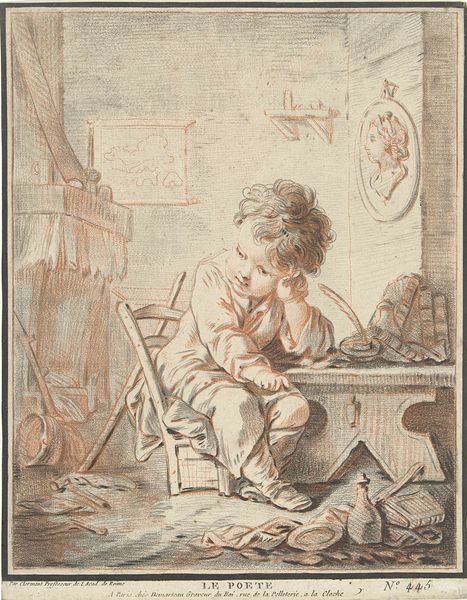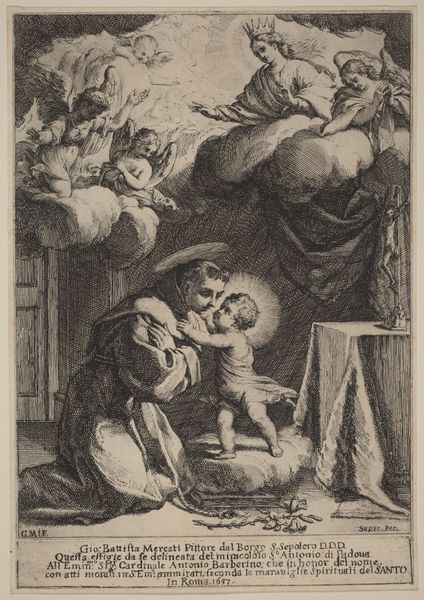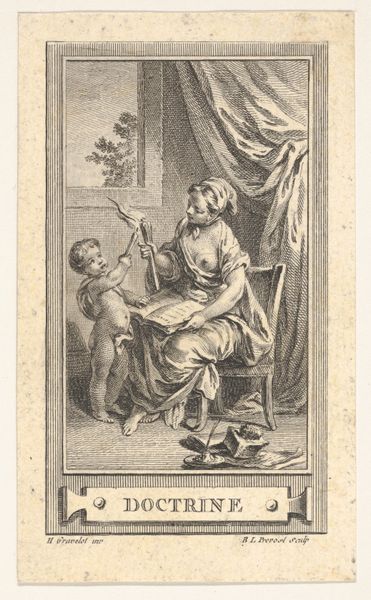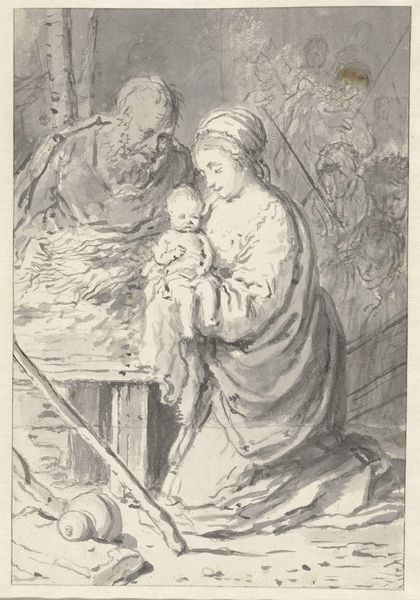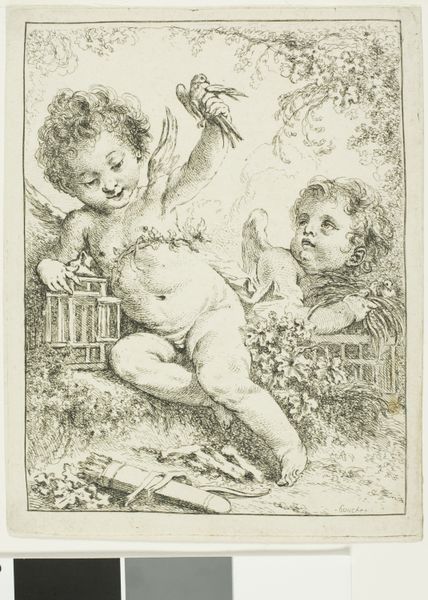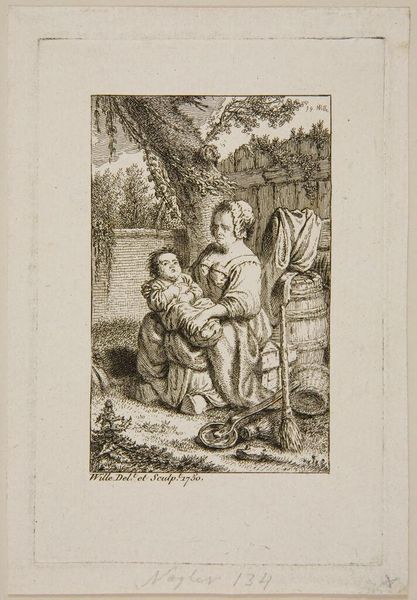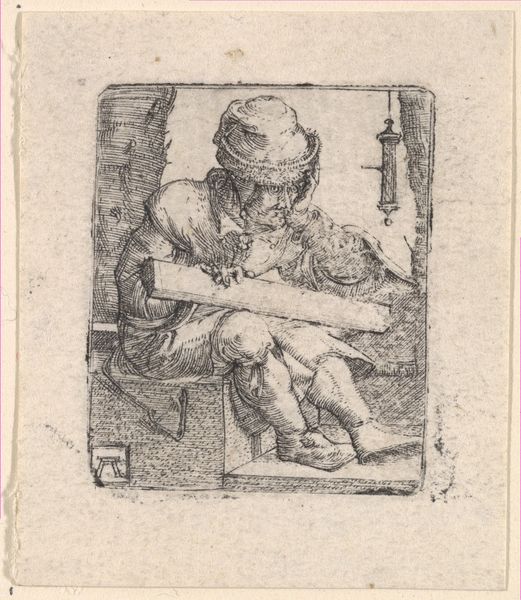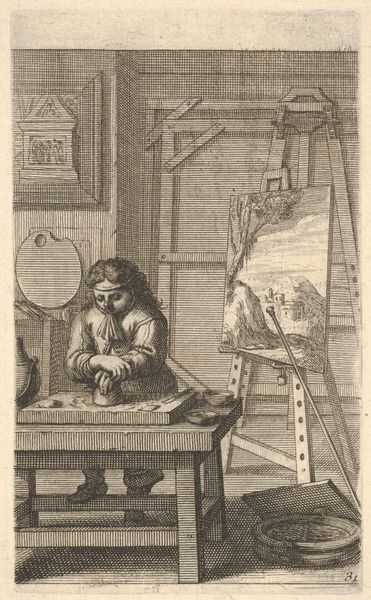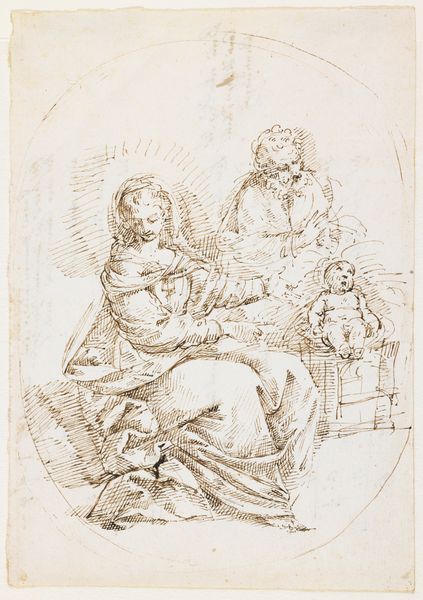
Marcolfa Discovers BertoldinoTrying to Hatch Eggs (recto); Sketch of Bertoldino (verso) 1709 - 1710
0:00
0:00
drawing, print, paper, ink, pen
#
drawing
#
baroque
# print
#
pencil sketch
#
figuration
#
paper
#
ink
#
pencil drawing
#
pen
#
genre-painting
#
italian-renaissance
Dimensions: 8-7/8 x 5-3/4 in. (22.6 x 14.6 cm)
Copyright: Public Domain
Editor: So this is "Marcolfa Discovers Bertoldino Trying to Hatch Eggs," a pen and ink drawing by Giuseppe Maria Crespi, dating from around 1709-1710. It's… intriguing! I’m drawn to the kind of raw, almost slapstick humor, especially with the old woman peeking around the corner. What stands out to you? Curator: Beyond the immediate humor, consider the egg itself—a symbol of potential, rebirth. Bertoldino's act, however absurd, embodies a fundamental human desire to control or hasten creation. The cultural memory surrounding eggs as symbols of fertility stretches back millennia. Do you see any parallel with ancient mythologies here? Editor: I see what you mean, a sort of reversal of a creation myth perhaps? Instead of a god creating life, it’s this comical little figure. The woman, Marcolfa, watching, almost like a disbelieving observer of a bizarre ritual. Curator: Precisely! Her expression isn’t just surprise; it’s a commentary on humanity’s often-foolish attempts to manipulate the natural order. The broken wall she peeks from, might suggest a crumbling of traditional beliefs. Do the ducks have any further symbolic charge for you? Editor: That’s interesting… the ducks… maybe representing natural processes, unimpressed by Bertoldino's antics. They're just being ducks! So maybe he's also trying to become one with Nature? Curator: Consider also how folk traditions often assign trickster figures animal counterparts, drawing on primal fears and fascinations. Crespi masterfully blends humor and deeper reflection. We often find psychological depth beneath lighthearted stories. Editor: This has made me realize there’s far more to this comical scene than meets the eye. It is quite densely packed with meanings and potential avenues to study and interpret. Curator: Exactly. Art often works through symbols embedded deep within our collective consciousness. Paying attention to those echoes is the first step in understanding an artist's vision.
Comments
No comments
Be the first to comment and join the conversation on the ultimate creative platform.
